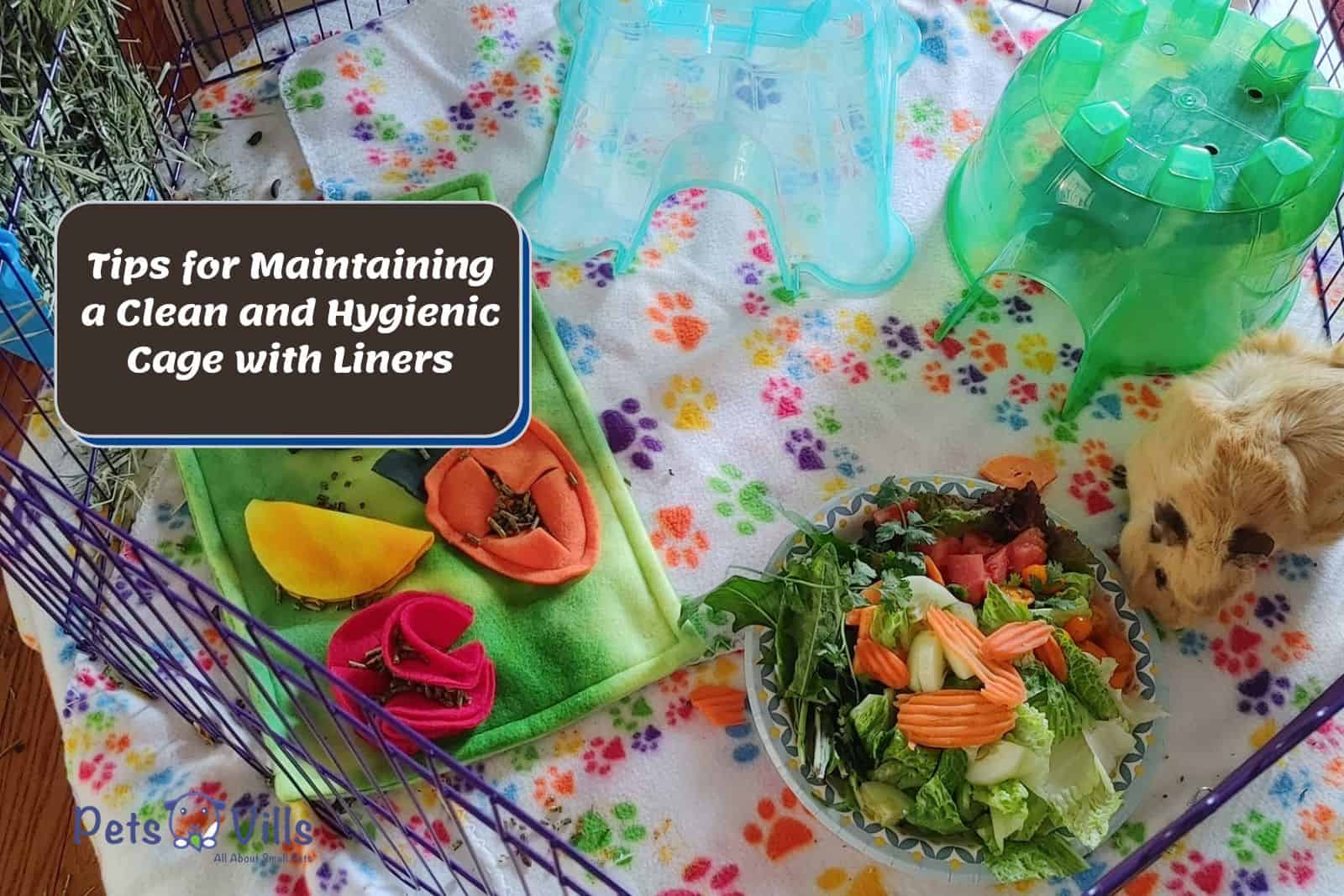FYI, this post contains affiliate links. I may earn a small commission if you purchase at no extra cost.
Searching for tips for maintaining a clean and hygienic guinea pig cage with liners? Look no further!
As a guinea pig care expert, I understand the importance of keeping your pet’s environment fresh and clean.
Through extensive research and hands-on experience, I’ve gathered practical advice to help you create a cozy, odor-free home for your furry friends.
Stay tuned as I share the most effective techniques to ensure your guinea pigs thrive in a healthy, hygienic space!
Table of Contents
Key Takeaways
- Fleece liners are the best bedding for guinea pigs in terms of odor control and moisture absorption.
- Male guinea pigs tend to smell more than females due to their more active grease glands.
- Establish a regular cleaning routine to keep fleece liners fresh and minimize odors.
- Washing fleece liners is easy, and following efficient steps ensures cleanliness and hygiene.
Now, for the top tips you’re aspiring to know…
6 Tips for Maintaining a Clean and Hygienic Cage with Liners
Here’s a little caveat about guinea pigs: they splash!
In fact, guinea pig experts Marta Giral et al. warn, “Regarding water consumption, guinea pigs also find bottles very attractive and repeatedly manipulate and shake the bottle caps.” (Giral et al., 2015) [1].
You can imagine coming home to a reservoir of water – not fun. But there’s more to keeping their cages clean. To do this, I’ve outlined 6 easy steps for you to follow:
1. Choose the Right Liner Material:
Opt for liners made from absorbent, easy-to-clean materials such as fleece or microfiber. These materials wick away moisture and can be machine-washed.
2. Regular Cleaning:
Clean the guinea pig’s cage and replace the liners regularly to maintain a hygienic environment.
3. Spot Cleaning:
Perform daily spot cleaning by removing visible waste, uneaten food, and soiled areas on the liner. This helps keep the cage fresh and reduces odor.
4. Provide Ample Hay:
Mayer and Donnelly (2013) recommend offering high-quality grass hay free-choice to guinea pigs as it promotes healthy digestion and helps keep their cage clean.
5. Proper Ventilation:
Ensure the guinea pig’s cage has adequate ventilation to prevent moisture and odor buildup.
6. Use a Cage Liner with a Waterproof Layer:
A waterproof layer beneath the absorbent material prevents urine from seeping through to the cage floor, reducing the need for frequent deep cleanings.
Prioritize hygiene. That means checking their liner, checking their ventilation, and checking that they’re safe and sound (no sharp objects around, etc. [2][3])
All you have to do is follow my expert tips to keep their cage clean, hygienic, and cozy.
But why does the cage smell in the first place? More importantly, What are the reasons? Let’s find out in the next section…
Check out this video for some more tips:
Why Do Guinea Pigs’ Cages Smell?
My guinea’s cage smelled awful. To find out the solution, I’ve done it all – talked to experts, read books, articles, etc. – and found an expert who summed it up perfectly:
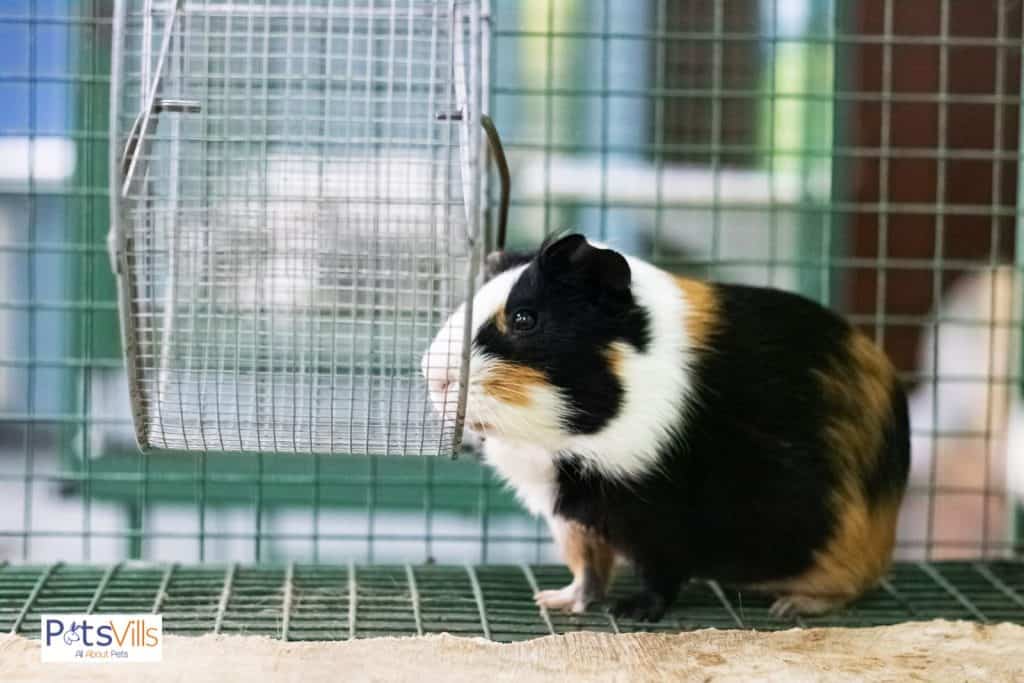
Veterinarian Dorcas P. O’Rourke, an expert in guinea pig health, states that factors like urine, feces, and leftover food can contribute to the smell in guinea pig cages (O’Rourke, 2004) [2].
But how do you reduce these? That’s easy, check these 4 areas:
1. Urine:
Guinea pigs, like any other animal, produce urine that can become intense if not cleaned regularly. The ammonia in urine can create a strong smell and harm your guinea pig’s respiratory system.
2. Feces:
Guinea pigs produce fecal pellets; if not removed regularly, they can accumulate and cause a nasty odor in the cage.
3. Leftover food:
When guinea pigs leave uneaten food in their cage, it can rot and create a foul smell. Regularly removing old food can help keep the cage smelling fresh.
4. Bedding:
The bedding used in your guinea pig’s cage can also impact the smell. Some types of bedding, like wood shavings, can be more prone to retaining odor than others, such as fleece.
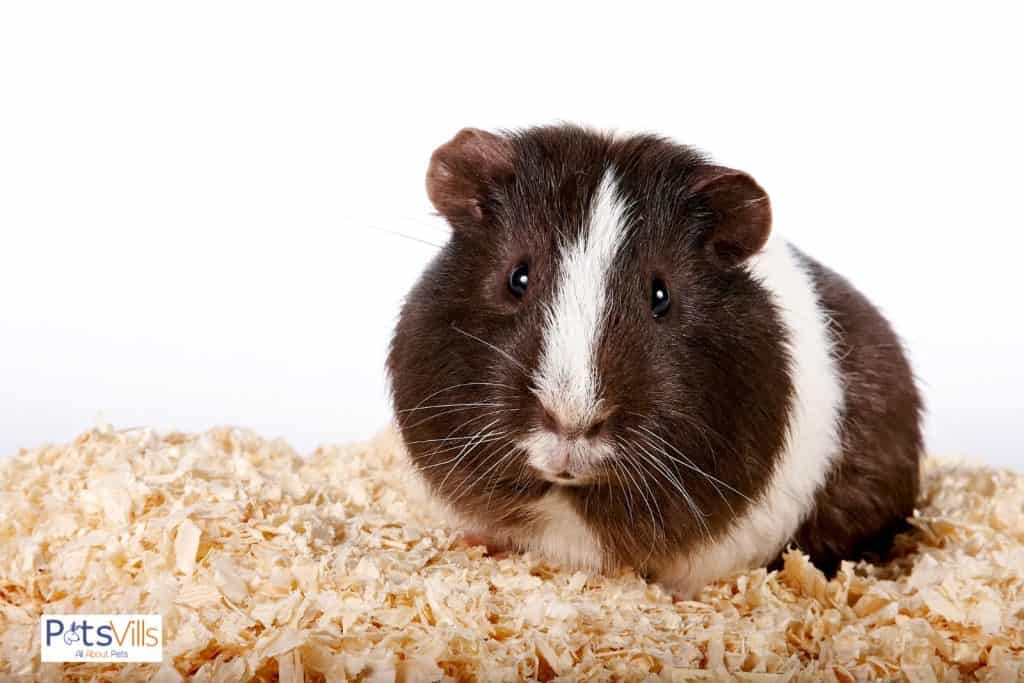
Knowing these familiar odor sources lets you keep your guinea’s cage sparkling clean. What’s more, the smell will be lessened. And the result will be happy you and a happier guinea.
For more insights on guinea pig care, don’t miss my articles discussing the best guinea pig cage liners and addressing the question: can I use bath mats in my guinea pig cage?
Male vs. Female Guinea Pigs: Which Gender Has a Stronger Odor?
You might wonder if there’s a difference between male and female guinea pigs regarding smell. Well, let’s get to the bottom of this olfactory mystery!
| Guinea Pig Gender | Smell Level | Reason |
|---|---|---|
| Male (Boar) | High | Active grease gland |
| Female (Sow) | Low | Less active grease gland |
It’s true—male guinea pigs tend to smell more than their female counterparts. Why’s that?
Because of the more active grease gland located near their bottom.
Male guinea pigs may require extra attention to stay clean, but your overall cage cleaning routine can remain consistent for all your cavies.
Knowing this, age can also play a role in the odor of your guinea pigs. Senior guinea pigs have a slower metabolism, leading to less food consumption and reduced waste production.
While this could result in a cleaner cage, older guinea pigs may need more frequent grooming due to their long rest periods in their favorite spots.
Great, but what exactly are the benefits? Let’s find out…
4 Benefits of Using Liners in Guinea Pig Cages
Guineas need proper bedding and appropriate housing – or else (just like with humans) they’ll be unhappy Giral et al. (2015) [1].
Knowing this, you need to optimize their habitats properly! That’s why liners are my favorite bedding for my guineas:
1. Comfort:
Liners provide a soft, comfortable surface for guinea pigs to rest on, reducing the risk of pressure sores and injuries.
2. Absorbency:
Liners help absorb moisture, keeping the cage dry and reducing the risk of bacterial growth and foul odors.
3. Easy to Clean:
Liners can be easily removed and washed, making cage cleaning more manageable and efficient.
4. Eco-friendly:
Many liners are reusable and made from eco-friendly materials, reducing waste and environmental impact.
For more tips on guinea pig care, continue reading how these top options compare – this will ensure your furry friends enjoy a happy, healthy life!
Comparing Fleece Liners To Other Beddings for Guinea Pigs
When it comes to odor control, it’s vital to know how fleece liners measure up against other bedding options for your guinea pigs. Let’s take a closer look at the differences:
| Bedding Type | Odor Control | Eco-Friendly | Comfort | Ease of Maintenance |
|---|---|---|---|---|
| Fleece Liners | ✅ | ✅ | ✅ | ✅ |
| Wood Shavings | ❌ | ❌ | ❌ | ❌ |
| Paper-Based Bedding | ❌ | ✅ | ✅ | ❌ |
As you can see, fleece liners outperform wood shavings and paper-based bedding in odor control, eco-friendliness, comfort, and maintenance.
They are the top choice for keeping your guinea pigs’ home clean and comfortable.
So why not make the switch to fleece liners?
Say goodbye to damp wood shavings and paper-based bedding and hello to a fresh, cozy, and easy-to-maintain habitat for your furry friends. It’s true: your guinea pigs will thank you!
For more tips, check out this video:
Top Cleaning Products for Your Guinea Pigs’ Cage
Once upon a time, a friend of mine faced challenges keeping her guinea pig’s habitat clean and comfortable. This inspired me to become a guinea pig enthusiast and proud owner.
Now, I’m eager to share the top cleaning products for our adorable cavies:
1. Create a Safe Environment with Outstanding Antibiotics
Establish a clean environment for your guinea pigs using safe and effective antibiotics.
Dr. O’Rourke recommends trimethoprim-sulfa, chloramphenicol, and enrofloxacin as the best options for our furry pals.
2. Go Green: Natural Disinfectants for a Spotless Habitat
When cleaning your guinea pig’s habitat, use natural disinfectants like white vinegar or a 5% ammonia solution.
These eco-friendly choices provide a sparkling-clean home without exposing your cavies to harmful chemicals.
3. Boost Gut Health with Live-Culture Yogurt
Guinea pigs have delicate digestive systems, so keeping their gut health in check is crucial.
Dr. O’Rourke suggests offering live-culture yogurt (about 5 mL/day) to help restore intestinal microflora [2].
4. Opt for Dental-friendly Fruits and Veggies
Serve your guinea pigs fresh, thoroughly washed fruits and vegetables to keep them healthy and satisfied.
This delivers vital nutrients and helps maintain dental health, preventing malocclusion (O’Rourke) [2].
Now that you know how fleece liners compare, let’s explore further ways to enhance your guinea pigs’ living space.
2 Methods for Washing and Deodorizing Guinea Pig Fleece Liners
Here are the 2 washing methods I recommend for washing fleece – maintaining freshness and washing fleece regularly.
Method #1: Maintaining Freshness with Fleece Liners
If you’ve decided to use fleece liners for your guinea pigs, keeping them fresh and odor-free is essential.
A simple cleaning routine ensures your guinea pig’s fleece liners stay clean and smell great.
Method #2: Change and Wash Fleece Liners Regularly
Fleece liners and accessories are designed to absorb moisture, so it’s essential to change them frequently.
For example, some pee pads are removable – plus, you can swap them out every other day. Better yet, you can use pee pads in the cage and toss them in the wash with other fleece items.
The frequency of changing the liners depends on your cage size and the number of guinea pigs you have. If you notice an unpleasant smell, it’s time to change the liners.
Want to know everything about cavy care? I’ll reveal my top tips…
Efficient Steps for Cleaning Guinea Pig Fleece Liners
As Dorcas P. O’Rourke, DVM, MS, Diplomate ACLAM, states in her publication, “Wet, soiled bedding combined with inguinal sebaceous secretions can become adhered to the penis, scrotum, or vulva, resulting in secondary infection or obstruction of urination and defecation. [2]”
But how do you keep the cage clean? Where should you start?
Cleaning guinea pig fleece liners is easier than you might think. To do this, I’ve outlined easy and simple steps to ensure your liners will remain fresh and hygienic:
1. Remove Debris:
Shake off debris, such as shavings or food, from the fleece liners before washing. For this task, you can use a handheld vacuum, whisk, broom, dustpan, or lint brush.
2. Load the Washing Machine:
Place the fleece liners in the washing machine, ideally in a laundry bag. Avoid overloading the machine, as it may hinder proper cleaning and rinsing.
3. Add Detergent:
Use a clean detergent without additives, coatings, or fillers to keep the fleece’s pores as clean and clear as possible.
4. Optional Additives:
Add a quarter cup of white vinegar to help eliminate germs, bacteria, and odors. Avoid using fabric softeners or dryer sheets, as they can affect the wicking properties of the fleece.
5. Set the Wash:
Adjust the machine settings to 30°C (86°F) and 1200 rpm. Hot water can effectively kill germs during the wash cycle.
6. Enjoy Quality Time:
While waiting for the wash, spend some quality time with your guinea pigs and offer them treats.
5. Remove and Dry:
Remove the liners from the machine and hang them on a drying rack for a few hours. Ensure the lint trap is clean for efficient drying. Our products are safe to dry on high heat.
I’ve given you some solid tips, so follow them to a “T.” If you do, you’ll see how easy and clean they become.
To keep fleece liners fresh, wash and clean them regularly.
Once you’ve done this, you’ll not only reward them with a longer life but with a sterile environment that will leave you and your guinea happy, healthy, and full of vitality.
FAQs
1. Can I use fabric softener or dryer sheets when washing fleece liners?
No, fabric softeners and dryer sheets can affect the wicking properties of the fleece, making it less effective at absorbing moisture.
2. Are male or female guinea pigs easier to maintain regarding smell?
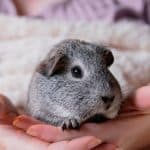
Not really. Male guinea pigs generally smell more due to their more active grease glands. However, with proper cleaning routines, both can be maintained with minimal odor.
3. Can I use vinegar to clean fleece liners?
Yes, adding a quarter cup of white vinegar to the washing machine can help eliminate germs, bacteria, and odors.
Conclusion
Now that you know about the Tips for Maintaining a Clean and Hygienic Guinea Pig Cage with Liners, here’s the nutshell version:
Maintaining a clean and hygienic guinea pig cage with liners is essential for the health and happiness of your furry friends.
Fleece liners offer excellent odor control and moisture absorption, making them a top choice for guinea pig bedding.
Establishing a regular cleaning routine and following efficient washing steps can provide a comfortable and hygienic environment for your guinea pigs to thrive.
Remember, happy guinea pigs make happy pet owners. Don’t forget to drop a comment to say what worked for you!
Until next time…
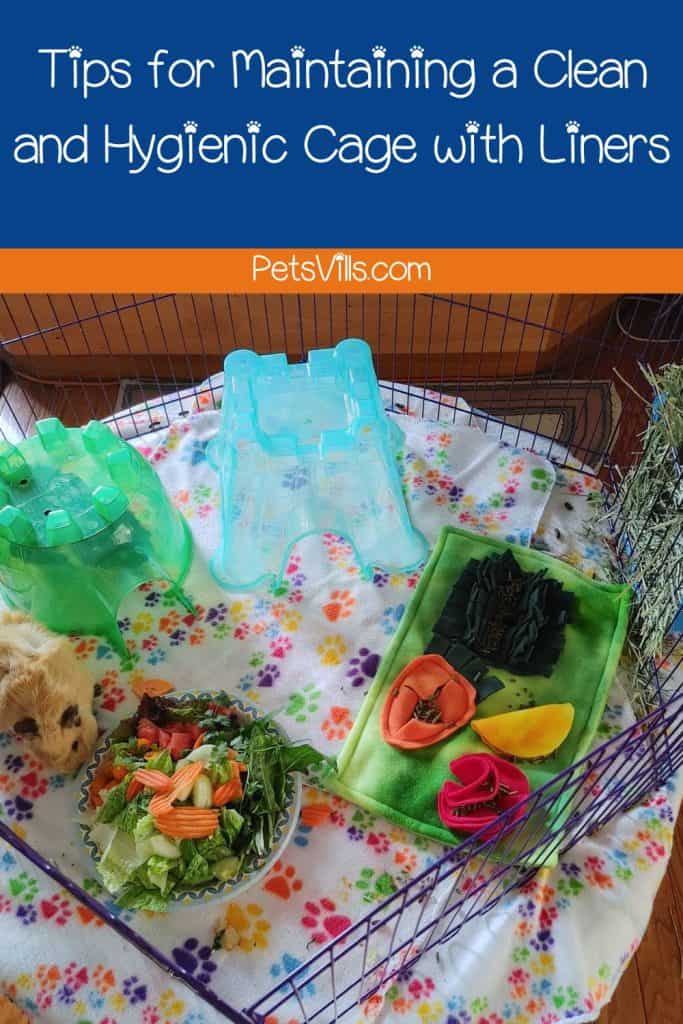
Resources
1. Giral M, Armengol C, Sánchez-Gómez S, Gavaldà A. Effects of Changing to Individually Ventilated Caging on Guinea Pigs (Cavia porcellus). Journal of the American Association for Laboratory Animal Science : JAALAS [Internet]. United States; 2015 [cited 2023 May 1];54:267–72. Available from: https://www.ncbi.nlm.nih.gov/pmc/articles/PMC4460938/
2. O’Rourke DP. Disease Problems of Guinea Pigs. Ferrets, Rabbits, and Rodents [Internet]. 2004;245–54. Available from: https://www.ncbi.nlm.nih.gov/pmc/articles/PMC7150066/#:~:text=Guinea%20pigs%20are%20susceptible%20to
3. Riggs SM. GUINEA PIGS. Manual of Exotic Pet Practice. 2009;456–73.
Alina Hartley is a small-town girl with a ginormous love of bearded dragons. It all started with Winchester, a baby bearded who was abandoned at the shelter by his former owners because of a birth defect that caused one front leg to be shorter than the other. Alina originally went to the shelter looking for a guinea pig, but one look at Winchester and it was love at first sight. From that day on, Alina has dedicated her life to learning everything she can about bearded dragons. She loves helping new beardie parents start their incredible journey with these magnificent reptiles.
Follow her on:
LINKEDIN
TWITTER.
Read her latest articles HERE
Learn more about her HERE.

